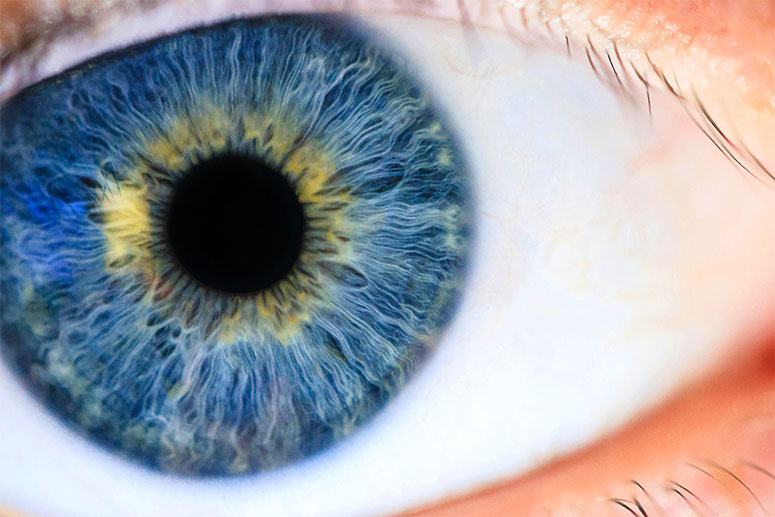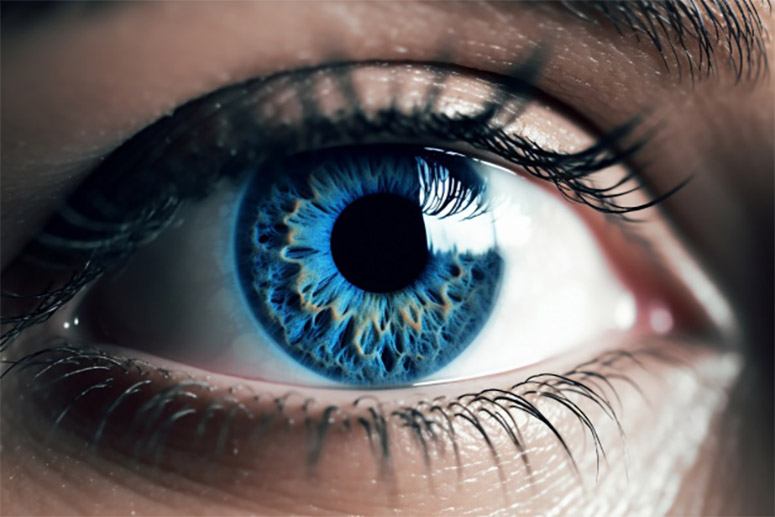Contents
What are the odds of having blue eyes? Blue eyes have long fascinated individuals due to their striking appearance and allure. However, what precisely accounts for this rare eye color, and how is it formed?
This discussion delves into the genetics behind blue eyes and the role of melanin production in determining eye color.
It also examines the global prevalence of blue eyes, including the phenomenon of genetic inheritance across generations and regional variations in their occurrence.
Furthermore, this exploration will reveal the advantages and disadvantages associated with blue eyes, as well as the possibilities of altering one’s eye color to blue. Join us in uncovering the intriguing aspects of blue eyes.
What are blue eyes?
Blue eyes represent a distinctive eye color, characterized by their striking visual appeal and found in a relatively small percentage of the global population.
The rarity of blue eyes can be attributed to specific genetic factors, particularly the inheritance patterns of melanin levels and the dominance or recessiveness of certain genes.
This unique trait not only attracts attention but also prompts interest in its genetic underpinnings, which are intricately linked to various traits, demographics, and social perceptions across different cultures.
The prevalence of blue eyes varies by ethnicity and geographical factors, influencing the cultural significance and beauty standards associated with this eye color.
How are blue eyes formed?
The formation of blue eyes is a complex process governed by intricate genetic mechanisms related to eye color, primarily influenced by melanin production and specific genetic markers.
Individuals with blue eyes generally exhibit lower levels of melanin in their irises, resulting in the characteristic blue pigmentation associated with this eye color.
Several genes, particularly OCA2 and HERC2, are critical in determining melanin levels and ultimately influence the allele frequency among blue-eyed individuals.
This genetic predisposition, when combined with environmental factors, contributes to the diverse variations in eye color observed across different populations worldwide.
What determines eye color?

Eye color is determined by a combination of genetic factors, specifically the inheritance patterns of dominant and recessive genes that regulate melanin production.
The primary genes involved in eye color determination are OCA2 and HERC2, which significantly influence melanin levels in the iris.
Predicting eye color requires understanding the complex interplay of these genetic factors, including family history and the probabilities of different gene combinations. For those curious about what are the odds of having green eyes, it’s important to note that green eyes are relatively rare compared to other colors like brown or blue.
The likelihood of having green eyes depends on the specific genetic variations inherited from both parents.
Over time, the distribution of eye color has shown considerable variation across different ethnicities, emphasizing how genetic diversity shapes this characteristic. Understanding these patterns can provide insights into the chances of inheriting various eye colors, including the less common green eyes.
1. Genetics
Genetics plays a crucial role in determining eye color, with specific genes accountable for the variations in pigmentation observed among individuals.
The interaction between dominant and recessive genes influences the production of melanin in the iris, resulting in different eye colors, including blue.
An understanding of the genetic markers associated with eye color allows researchers to investigate the underlying mechanisms of gene expression that lead to diverse phenotypes.
Among these genes, the OCA2 and HERC2 genes have been identified as significant contributors to eye color variation. The OCA2 gene is essential for melanin production, while the HERC2 gene regulates the expression of OCA2.
Notably, variations in these genes can produce a continuum of eye colors, ranging from dark brown to light blue, and their frequencies exhibit significant variation across different populations.
This genetic diversity not only underscores the complexity of eye color inheritance but also provides insights into the evolutionary adaptations of various human groups, illustrating how environmental factors may influence the distribution of specific alleles within global populations.
2. Melanin production
Melanin production is a crucial factor in determining eye pigmentation, as varying levels of this pigment contribute to the spectrum of eye colors observed in the population.
Individuals with blue eyes typically exhibit lower melanin levels compared to those with darker eye colors, such as brown or green.
This variation in melanin production not only influences differences in eye color but also underscores the genetic predispositions that affect pigmentation across different ethnic groups.
The genetic basis of eye color is primarily governed by multiple genes, with the OCA2 and HERC2 genes playing essential roles in the synthesis and distribution of melanin.
Individuals possessing specific variations in these genes may exhibit increased melanin levels, resulting in darker eye colors, while those with alternative genetic markers may have reduced melanin, leading to lighter shades.
The interaction between genetic factors and environmental influences is particularly intriguing, as it contributes to the diverse array of eye colors, thereby enhancing the rich mosaic of human appearance across various cultures.
What are the odds of having blue eyes?

The likelihood of possessing blue eyes can vary considerably based on geographic and demographic factors, with population statistics illustrating a complex distribution of eye color across the globe.
Research demonstrates that blue eyes are most commonly found among specific ethnic groups, particularly within the Caucasian population, where the probability of individuals exhibiting blue eyes is significantly higher compared to other ethnicities.
Analyzing these probabilities not only highlights the rarity of blue eyes but also offers valuable insights into genetic inheritance and its effects on population dynamics.
1. Worldwide statistics
Worldwide statistics indicate that blue eyes account for approximately 8% of the global population, demonstrating their rarity in comparison to other eye colors.
The distribution of blue eyes is not uniform – it is more prevalent in regions such as Northern and Eastern Europe, where genetic factors and historical mating patterns have shaped eye color frequencies over generations.
For example, countries such as Iceland and Finland have reported that blue-eyed individuals comprise as much as 80% of their populations, underscoring the genetic distinctiveness of these regions.
In contrast, areas such as Africa and Asia exhibit a significantly lower prevalence of blue eyes, often falling below 1%. This geographical variation can be attributed to a combination of environmental factors, genetic diversity, and evolutionary adaptations.
These patterns not only reflect societal perceptions regarding beauty and attractiveness but also raise pertinent questions about the evolutionary advantages that may influence eye color preferences across different cultures.
2. Ethnicity and eye color
Ethnicity plays a significant role in the distribution of eye color, with the Caucasian population exhibiting the highest prevalence of blue eyes in comparison to other ethnic groups.
Genetic studies indicate that the occurrence of blue eyes is not uniformly distributed – rather, certain ethnicities possess genetic variations that favor darker eye colors.
For instance, populations residing in regions with lower light exposure demonstrate a higher frequency of brown eyes, a trait that has likely evolved due to its protective advantages against ultraviolet light.
Conversely, variations in lighter eye pigmentation, such as blue and green, are commonly observed in Northern European groups, where genetic drift and historical migration patterns have been influential factors.
This intricate interplay between genetics, environmental conditions, and historical social behaviors contributes to the distribution of eye colors, highlighting how ethnic diversity enhances the human experience and results in a captivating array of eye colors across different cultures.
3. Family history
Family history is instrumental in predicting eye color, particularly regarding the probability of blue-eyed parents having blue-eyed children.
Genetic inheritance adheres to specific patterns, where the recessive traits associated with blue eyes can occasionally skip generations, leading to unexpected variations in the eye color of offspring.
These genetic patterns arise from the intricate interplay of multiple genes, including those that govern melanin production in the iris. When a child inherits recessive alleles for blue eyes from both parents, this trait is expressed as a distinct blue color.
Conversely, if a dominant allele is inherited from either parent, the child may exhibit brown or green eyes.
Therefore, the traits that define eye color are not merely a reflection of parental genetics – they represent a complex tapestry woven through family lineage.
This suggests that inherited eye color can unveil intriguing narratives concerning ancestry and genetic diversity.
Can blue eyes skip generations?
Yes, blue eyes can indeed skip generations due to the intricate nature of genetic inheritance patterns, particularly those involving recessive genes.
Even if the parents do not possess blue eyes, the presence of recessive traits within their genetic makeup can result in the birth of blue-eyed children, thereby complicating predictions regarding eye color.
This phenomenon arises primarily from variations in the OCA2 and HERC2 genes, which regulate melanin production in the iris. When both parents carry the recessive gene for blue eyes, they can transmit this trait to their offspring, even if they themselves have brown or other colored eyes.
Consequently, a child can inherit the requisite combination of genes for blue eyes, even if their grandparents were the last visibly blue-eyed relatives.
This genetic complexity not only influences an individual’s appearance but also poses challenges to straightforward predictions about eye color within families, rendering familial traits considerably more fascinating.
Are blue eyes more common in certain regions?
Blue eyes are indeed more commonly observed in specific regions, particularly in Northern and Eastern Europe, where population genetics and historical mating patterns have contributed to their prevalence.
The geographical variations in the distribution of blue eyes can be attributed to both genetic predisposition and environmental influences that affect eye pigmentation across different ethnic groups.
In these regions, high concentrations of blue-eyed individuals are often associated with particular genetic markers that have been inherited through generations, a result of centuries of relatively isolated populations.
The lighter pigmentation associated with blue eyes may have provided certain advantages in areas with limited sunlight, thereby influencing natural selection.
Conversely, this trait is less common in warm climates, where darker eye colors predominate, reflecting the adaptation of ethnic groups to their specific environments.
Understanding these factors not only illuminates the remarkable diversity of human features but also underscores the intriguing interplay between genetics and geography.
Do blue eyes have any advantages or disadvantages?
The inquiry into whether blue eyes confer advantages or disadvantages is multifaceted, incorporating both health-related considerations and societal perceptions.
On one hand, individuals with blue eyes may be perceived as having enhanced visual appeal in certain cultures. Conversely, they may face increased sensitivity to light as a result of lower melanin levels in their eyes.
A comprehensive understanding of these characteristics is essential to elucidate the broader implications of eye color on both health outcomes and social dynamics.
1. Advantages
One of the primary advantages associated with blue eyes is their aesthetic appeal, which is often celebrated across various cultures and can influence prevailing beauty standards.
Individuals with blue eyes may possess unique genetic variations that contribute to their distinctiveness, thereby enhancing their perceived attractiveness within diverse sociocultural contexts.
The striking clarity and vividness of blue eyes can serve to attract attention and admiration, frequently becoming a focal point in social interactions.
This allure can create opportunities, as individuals with this eye color are often perceived as more charismatic and engaging.
The relative rarity of blue eyes compared to other eye colors adds an element of intrigue, allowing blue-eyed individuals to stand out in a crowd.
In many social circles, this uniqueness can translate into an elevated social status, reinforcing the notion that beauty is not solely determined by physical attributes but is also shaped by the rich tapestry of genetic diversity that influences perceptions of attractiveness.
2. Disadvantages
Despite their aesthetic appeal, blue eyes may present certain disadvantages, particularly in relation to eye health. Individuals with lower melanin levels often experience increased sensitivity to light, resulting in discomfort in bright conditions and a higher predisposition to specific eye-related issues over time.
This heightened sensitivity to light, commonly referred to as photophobia, can make it challenging for individuals with blue eyes to navigate sunny environments or brightly lit indoor spaces comfortably, often necessitating squinting or the use of sunglasses.
Furthermore, the lack of pigment can render these individuals more susceptible to ultraviolet light exposure, increasing the risk of developing cataracts or macular degeneration later in life.
Consequently, it is essential for individuals with blue eyes to take proactive measures, such as engaging in regular eye examinations and utilizing protective eyewear, to safeguard their visual health and mitigate the long-term effects of these inherent disadvantages.
Can you change your eye color to blue?

The desire to change one’s eye color to blue is a common aspiration. Although altering natural pigmentation can be challenging, several methods are available to achieve this aesthetic transformation.
Options include natural techniques to enhance existing blue eyes through makeup application, as well as cosmetic solutions such as colored contact lenses that offer a temporary change in eye color.
1. Natural ways to enhance blue eyes
Natural methods for enhancing blue eyes often involve the application of makeup techniques designed to accentuate the distinctive shades of blue present in the iris.
By selecting specific eyeshadow colors, eyeliner styles, and mascara, individuals can effectively draw attention to their blue-eyed features, thereby enhancing their inherent beauty.
Along with color selection, it is crucial to consider the overall aesthetic appeal that these makeup choices contribute. Utilizing warm tones such as copper, gold, and peach can create a striking contrast against the cool hues of blue eyes, rendering them even more vibrant.
The application of a soft, shimmery highlighter to the inner corners of the eyes can open the gaze and impart a fresh, radiant appearance.
Furthermore, the appropriate eyeliner techniques are instrumental – for instance, a winged eyeliner can elongate the eyes, while a tight line with dark pencil or gel can beautifully emphasize their shape.
These artistic choices not only highlight the depth of blue eyes but also enhance the overall makeup presentation.
2. Cosmetic options for changing eye color
Cosmetic options for altering eye color, such as colored contact lenses, represent a popular and effective means of achieving blue eyes without modifying one’s natural pigmentation.
These lenses are available in a variety of shades and styles, providing a customizable appearance that can significantly transform an individual’s overall look.
Along with colored contacts, there are other cosmetic methods that can enhance or change eye color. Surgical procedures, such as iris implants, offer a permanent alteration of the eye’s color – however, these procedures carry considerable risks.
Some individuals may also consider the use of eye drops that claim to modify pigmentation, although these are less common and generally regarded as less reliable.
Each option entails distinct implications, costs, and effects, making it imperative for individuals to conduct thorough research and consult with qualified professionals prior to making a decision.
Ultimately, the objective is to achieve a striking, captivating gaze while ensuring both safety and comfort.
See our FAQ further down the page for details on the chances of having blue eyes.
Enter the captivating realm of probabilities and remarkable events. Enhance your curiosity and knowledge with our comprehensive articles at WhatAreTheOddsOf.NET.



